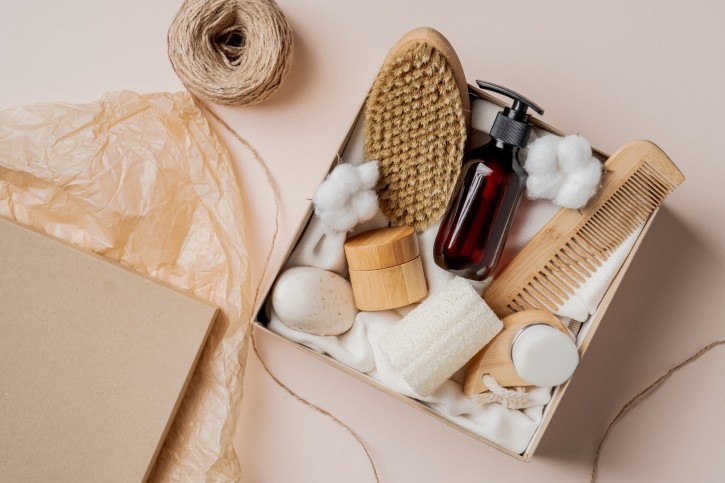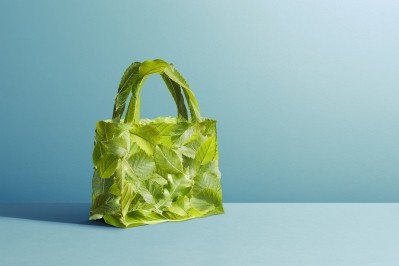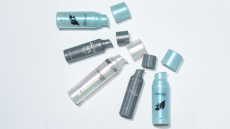Expert examines challenges and solutions for sustainable product packaging

Earlier this year, worldwide management consulting firm McKinsey & Company surveyed consumer perceptions regarding sustainable packaging. It determined that "while respondents named hygiene, food safety, and shelf life as the most important characteristics for product packaging when making a purchase, 43 percent of consumers still say environmental impact is an extremely or very important packaging characteristic when making purchasing decisions."
This finding is particularly significant to manufacturers and suppliers of the cosmetics and personal care product industry, considering that a study published in the scientific journal Polymers last year found that "in addition to the generation of waste in the production processes, there is considerable concern regarding those that originate during and after the use of cosmetics, especially with regard to plastics."
In recent years, the study determined, "there has been a marked growth in plastic consumption, with an average annual increase of 2.5%., and when it comes to quantity, approximately 355 million tons of consumption are generated annually."
It can be reasonably inferred that the cosmetics and personal care product industries have an ethical responsibility to meet the growing demands of consumers to reduce plastic consumption throughout the supply chain, specifically in product packaging. To learn more about some of the most pressing challenges to remediate plastic use in cosmetic and personal care product packaging, as well as some of the solutions currently being developed to address this issue, CosmeticsDesign spoke to Brandon Frank, Owner of Pacific Packaging Components, Inc. for his insights.
In addition to running PPC, Inc., Frank hosts the Packing Brothers podcast, which examines sustainability issues across the packaging supply chain, and is a Credo Clean Beauty Council member as a Sustainable Packaging Expert.
The onus of sustainability in cosmetics/PBC product packaging
When examining where the responsibility for sustainable consumption lies, "everyone has a role to perform in mitigating the negative effects of beauty packaging on our planet and its inhabitants," said Frank. While this responsibility is split between product manufacturers who can offer more sustainable packaging options and consumers to follow through and purchase more sustainable choices, "beauty brands, packaging suppliers, recyclers, and raw material suppliers exert significantly more influence than consumers," said Frank.
While recycling is often touted as the end solution to consumption issues, Frank noted that "in 2021, households in the US produced approximately 51 million tons of plastic waste, of which 2.4 million tons, or 5% were recycled," which indicates that "although the system is not damaged, it is also not functioning." Therefore, he continued, "packaging suppliers and beauty brands must design and select packaging with the end in mind, selecting packaging materials and formats with a greater likelihood of being recycled" to improve sustainability efforts.
For example, he illustrated, "PET (#1) plastic bottles have a significantly higher recycling rate than HDPE (#2) plastic bottles and are even more recyclable than PP (#5) plastic bottles, and more transparent plastics are recycled than pigmented or opaque plastics."
Cosmetics and personal beauty care manufacturers looking to become more sustainable should apply this information to their packaging designs. Still, many continue to choose black plastic or opt for PP instead of PET, he said. While "sometimes there is a valid reason, frequently it is due to greenwashing and ignorance," he said, further emphasizing the responsibility of the manufacturer to embrace honesty and education when working to improve product sustainability.
Challenges vs. solutions for sustainable packaging options and practices
In addition to a lack of education in sustainability practices, challenges facing manufacturers looking to implement more sustainable options have historically included "supply chain problems, high minimum order quantities (MOQs), and poor material or packaging quality," shared Frank. Thankfully, he continued, "the majority of these issues have now been resolved," adding that currently, "the areas for improvement moving forward are chain-of-custody, openness, and validation."
He said that one area for improvement in implementing more sustainable packaging practices in the beauty sector lies within the packaging value chain, which "must offer the documentation to support claims of all 'sustainable' packaging formats when environmental, social, and governance (ESG) guidelines are implemented." In doing so, cosmetics and personal care product companies will demonstrate accountability through greater transparency, increasing consumer awareness of material sourcing for an improved understanding of sustainable packaging options.
Technological innovations also offer manufacturers solutions for more sustainable packaging, Frank noted, adding that "every participant in the packaging value chain should actively seek methods to use technologies such as artificial intelligence, blockchain, and track & trace to make more eco-friendly decisions."
He encouraged companies in the beauty and personal care product space to consider "how beauty brands can increase their recycling rates by developing an incentive-blockchain and scannable technology solution, how a packaging manufacturer can use AI to increase efficiency, reduce carbon emissions, and/or decrease reject rates, and how consumers can identify brands and packaging formats that prevent ocean pollution more effectively" as just a few examples of the potential impacts that technology can make in improving manufacturing sustainability.
While it is not the ultimate solution, he concluded, "technology has been and will continue to be a useful instrument for reducing the environmental impact of cosmetic packaging, and it's the early adopters that will be leading the charge."
Moving forward
There is no one-size-fits-all solution to the issues facing cosmetics and personal care product manufacturers or suppliers to these industries regarding sustainable packaging solutions. Still, there is certainly incentive to try, Frank concluded. "According to numerous reports," he explained, "beauty brands that incorporate sustainability into their ethos perform better than those that don't."
Moving forward, companies that can analyze their current operations and sustainability practices, identify areas for improvement, implement technological innovations, and be transparent in their efforts will likely make a more significant environmental impact that will resonate with the consumer. By offering more sustainable packaging options, consumers can make more sustainable purchasing decisions and work with manufacturers to reduce waste and improve consumption rates.













